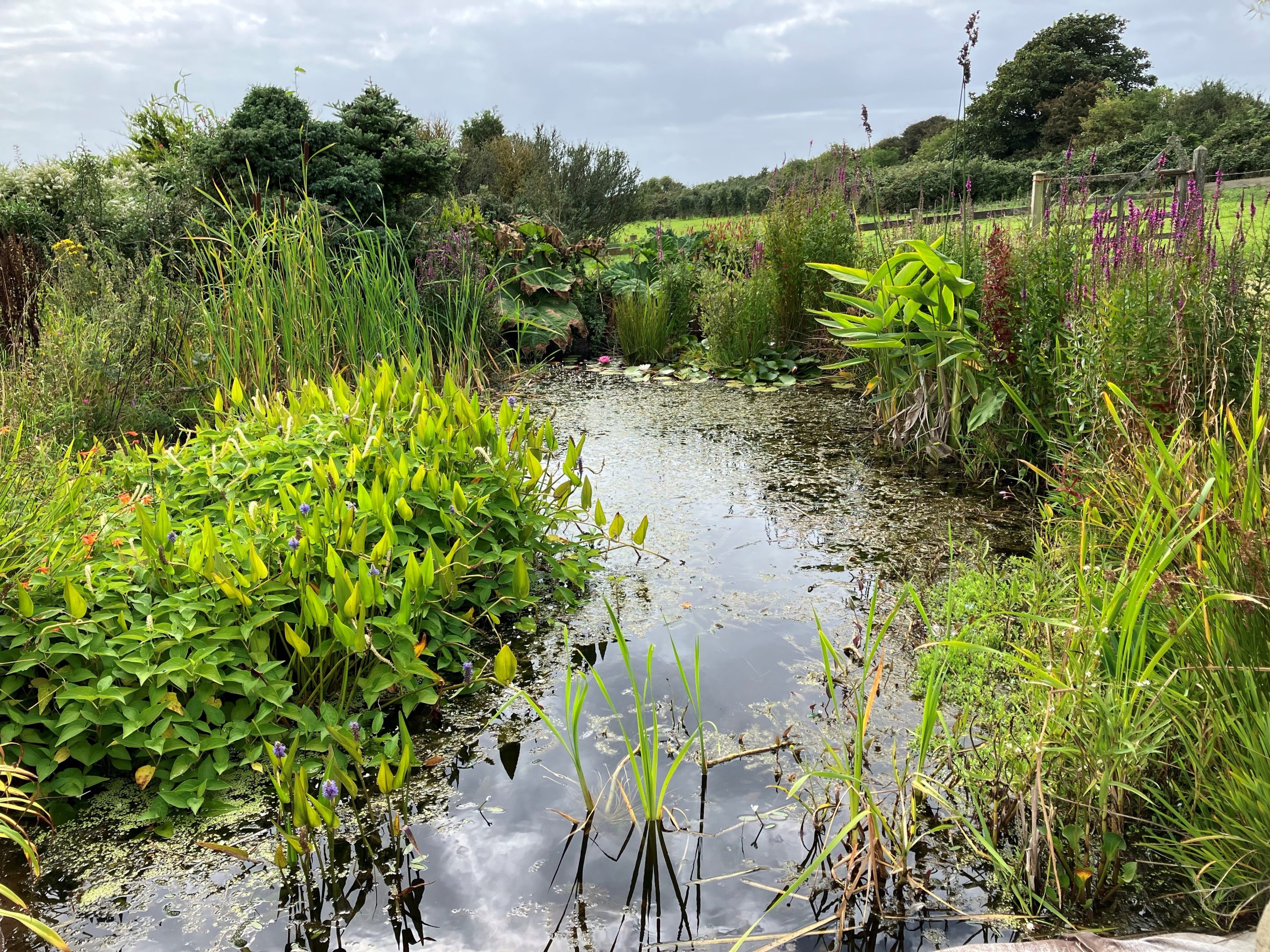This month, Barrie Swinnerton looks back over the development of the wildlife pond that he and his wife Margaret have created and nurtured over the years.
We dug out the pond just over 10 years ago in our paddock which also has some apple and pear trees and was also intended to be a wildflower meadow because at that time we had bee hives.

We found it difficult to establish wildflowers consistently but what did do well apart from the many grasses were cowslips and oxy daisies.

The pond had some ledges where a few water plants were placed and in order to protect it from the prevailing SW wind we planted some small trees and shrubs together with gunnera. In the early days the plants were slowly becoming established as shown in winter and spring.


With time all the plants grew well as you can see from the next photo taken after about 7 years.

Also in the pond I put some small bunches of oxygenating plant which after a few years had increased like quatermass and now has to be regularly thinned out every year. The next photo taken this year shows how the plants have grown further and some of these particularly in the pond will have to be cut back this winter.

We didn’t want fish in the pond and so it has established its own wildlife over the years apart from the introduction of some common newts a few years ago. Dragonflies every year are the Broad Bodied Chaser, Emperor, and Common Darter with damselflies Blue and Blue Tailed. Less frequent are some Hawker Dragonflies and the Golden Ringed.

There is a regular visit from a Grey Heron who is very patient in his attempts to catch frogs and it’s quite comical to see how it is able to swallow the frog which takes up a star shape in order to prevent this happening. Interestingly on one occasion there was a visit from a second bird which looked like a younger Heron and not surprisingly there was a bit of a clash and the intruder flew off. Imagine our surprise when the next day we found a dead Heron in the pond!

In spite of the Heron the pond, wildlife is very active with many water creatures as well as frogs, toads, grass snakes, slow worms etc. My granddaughter caught a nymph on one of her pond dipping days.


Dragonfly nymphs can sometimes stay in the pond for some years before developing into a flying machine. And just to prove that newts hibernate we dug up this common newt in February this year in our garden quite some distance from the pond. I have counted as many as 20 newts whilst walking around the pond on two occasions in late March.

Other visitors to the pond mainly during the night (when I have a nighttime camera setup) include fox, badger, rat, rabbit, mice etc., particularly during the dry spells. Then of course there are numerous species of birds during the day, including a male and female mallard who seemed very much at home but then didn’t stay long. Swallows love the pond for feeding on flies and scooping up water and of course the pond and surrounding area is alive with all types of butterflies, bees and many other types of insects.
The major plan for the winter is to thin out and remove some of the water plants that are trying to take over the pond and hope we don’t disturb too many nymphs and other creatures under water.
Barrie Swinnerton
Garden: Middleton
We aim to post a garden blog each month. Let us have a peep into your garden – a favourite corner, a favourite plant, what’s growing, what’s not – and share your photos and comments. Please get in touch by email (rhossilihwb.cymru@gmail.com) or contact Maggie or Isobel directly and we can chat about bringing your garden to life on the Hwb!


What an amazing project – you must be so pleased with how the the wildlife has embraced your idea. It’s really good to have spaces like this in our modern way of life, it’s so easy to overlook the needs of other species.
Hi Barrie – very interesting, thank you. Can you remember when you first got frogspawn in your pond?
I dug a pond in the field bordering our garden in the summer of 2021. It had at least one frog visiting for a while later that year and again the following summer, but I have yet to get any frogspawn. I noticed last week that, of the 6 ponds dug alongside Rhossili Down, 3 of these already have frogspawn this year. Do you have any yet this year?
thanks
Francis
February is the month we normally get frogspawn but nothing yet. Over recent years have had trouble with grey heron eating frogs and newts and also sometimes when frogspawn has appeared it suddenly all disappears no doubt taken by regular visiting foxes and sometimes a badger.
Years ago before the heron and others discovered the pond we regularly produced tadpoles etc.
Just noticed the first newts in the pond today. Hibernation usually ends about February but of course it may be getting earlier. Whirligigs active also.
Still no frogspawn.